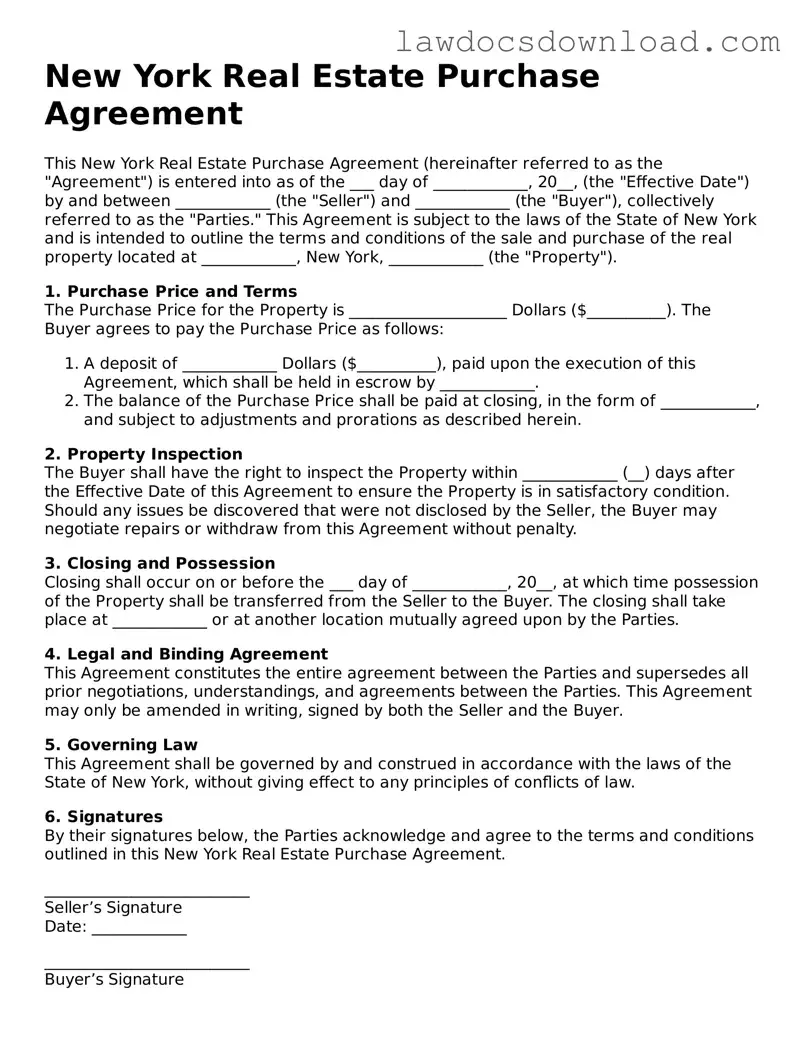New York Real Estate Purchase Agreement
This New York Real Estate Purchase Agreement (hereinafter referred to as the "Agreement") is entered into as of the ___ day of ____________, 20__, (the "Effective Date") by and between ____________ (the "Seller") and ____________ (the "Buyer"), collectively referred to as the "Parties." This Agreement is subject to the laws of the State of New York and is intended to outline the terms and conditions of the sale and purchase of the real property located at ____________, New York, ____________ (the "Property").
1. Purchase Price and Terms
The Purchase Price for the Property is ____________________ Dollars ($__________). The Buyer agrees to pay the Purchase Price as follows:
- A deposit of ____________ Dollars ($__________), paid upon the execution of this Agreement, which shall be held in escrow by ____________.
- The balance of the Purchase Price shall be paid at closing, in the form of ____________, and subject to adjustments and prorations as described herein.
2. Property Inspection
The Buyer shall have the right to inspect the Property within ____________ (__) days after the Effective Date of this Agreement to ensure the Property is in satisfactory condition. Should any issues be discovered that were not disclosed by the Seller, the Buyer may negotiate repairs or withdraw from this Agreement without penalty.
3. Closing and Possession
Closing shall occur on or before the ___ day of ____________, 20__, at which time possession of the Property shall be transferred from the Seller to the Buyer. The closing shall take place at ____________ or at another location mutually agreed upon by the Parties.
4. Legal and Binding Agreement
This Agreement constitutes the entire agreement between the Parties and supersedes all prior negotiations, understandings, and agreements between the Parties. This Agreement may only be amended in writing, signed by both the Seller and the Buyer.
5. Governing Law
This Agreement shall be governed by and construed in accordance with the laws of the State of New York, without giving effect to any principles of conflicts of law.
6. Signatures
By their signatures below, the Parties acknowledge and agree to the terms and conditions outlined in this New York Real Estate Purchase Agreement.
__________________________
Seller’s Signature
Date: ____________
__________________________
Buyer’s Signature
Date: ____________
